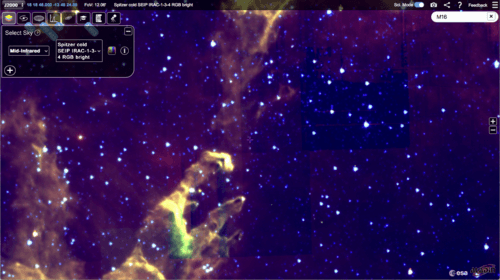
Enjoy ESASky 3.0!
A new version of ESASky was presented on November 6, featuring new and improved functionalities, new Spitzer HiPS maps, and the possibility to choose between two different user modes.
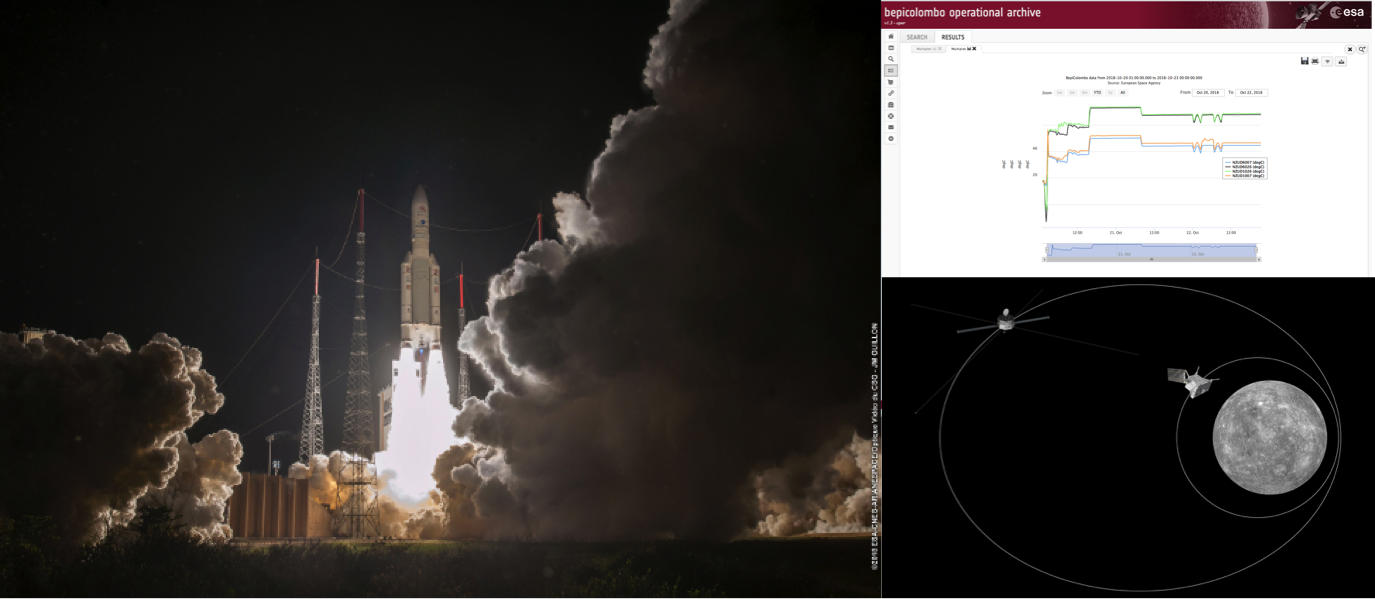
The BepiColombo mission to Mercury was successfully launched from Europe’s Spaceport in Kourou in October 20, at 01:45:28 GMT.
Soon enough, the BepiColombo Operations Archive (BOA), developed at the ESDC, was getting the first operational data confirming that everything on board was working as expected.
BepiColombo is a joint mission of the European Space Agency and the Japan Aerospace Exploration Agency (JAXA), the first one sent by these agencies to explore the innerest planet in our Solar System.
Two spacecrafts, ESA’s Mercury Planetary Orbiter (MPO) and JAXA’s Mercury Magnetospheric Orbiter (MMO), will carry out complementary measurements of the planet and its dynamic environment at the same time.
The scientific data will be made available to scientists and general public through the Planetary Science Archive (PSA).
The two probes will reach Mercury after a long 7-year journey, but their instruments will also operate during the cruise phase, providing observations of Venus in two flybys, in October 2020 and August 2021.
As a matter of fact, the first science data, corresponding to the commissioning of the magnetometer, arrived at the PSA only a few days after the launch; however, users will have to wait until they are validated and the proprietary period expires before they can download them.
For now, we have to be satisfied with the spacecraft selfies that the mission teams are posting from time to time.
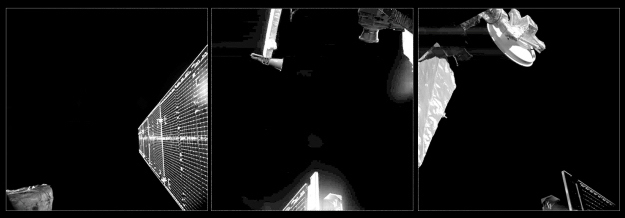 Images: ESA
Images: ESA
A new version of ESASky was presented on November 6, featuring new and improved functionalities, new Spitzer HiPS maps, and the possibility to choose between two different user modes.

The application period for the ESAC Trainee Project 2019 is open until December 28. The ESDC offers two training opportunities within this programme.

The catalogue contains 5.50 million sources detected in any of the six OM filters.
Full story

New Rosetta, Mars Express and ExoMars datasets have been delivered. The service also features a new download manager with enhanced functionalities.
Full story
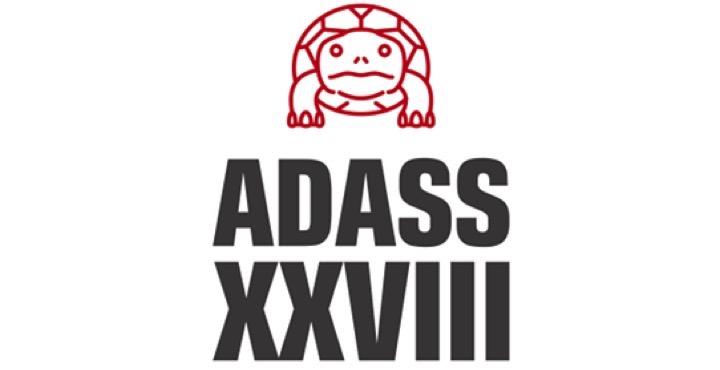
Talks have been given about Virtual Reality 3D visualisation of Gaia data, machine learning and data-driven science with several ESDC services, and exploration of Solar System data with ESASky.
Full story

The meeting, held at ESAC on October 17-18, aimed at increasing collaboration and encouraging the use of common standards and services between different data providers.
Full story

On November 6, 2018, ESASky 3.0 was released, with significant improvements to the user interface.
It now integrates a switch allowing users to change between two different modes, “Explorer” and “Science”, depending on their level of expertise and their intended use of the tool.
This version features an improved SSO search functionality, with refined cross-matches and new objects.
It also enables the easy lookup of any location in NED, SIMBAD, Vizier, the Vizier SED plotter service and the World Wide Telescope (WWT), a sky exploration tool from the American Astronomical Society (AAS).
Furthermore, the ESASky collection of Hierarchical Progressive Survey (HiPS) maps is enlarged with the addition of nine Spitzer/IRAC HiPS generated by the ESDC, in collaboration with the Spitzer Science Center in Caltech (USA).
Other changes in version 3.0 include a resizable data panel, significant improvements to touch devices, improved cross-browsers support, and improved reliability.
More information on the ESASky functionalities can be found in the related documentation.
Image: ESA/ESDC
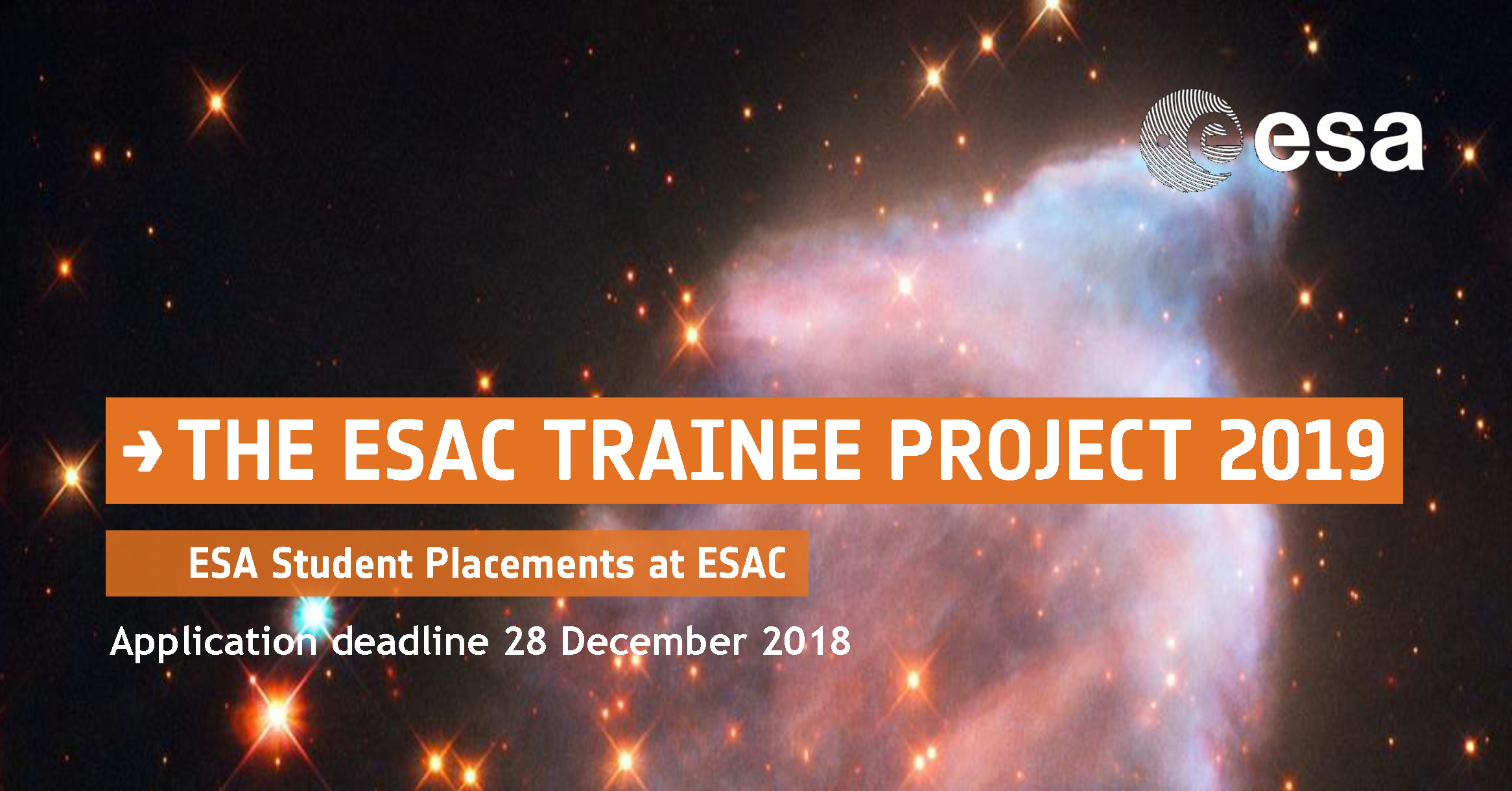
The ESAC Trainee Project offers students from universities all over Europe the possibility to contribute to missions and projects developed at the European Space Astronomy Centre (ESAC), in topics such as Astrophysics, engineering, IT, instrumentation or education.
The programme is part of the ESA Student Placement scheme, and it is organised and funded by ESAC Human Resources and the Science Operations Department, in collaboration with the ESAC Faculty and the ESA Education Office.
Applicants should be nationals of an ESA member state or of one of its cooperating states, and should be students at the moment of the application.
The traineeships last from three to six months and are unpaid, although a daily allowance may be granted.
For year 2019, the ESDC offers two traineeship opportunities, to work in the cross-visualisation of ExoMars and Mars Express data and in a project that will allow users to google for ESA space science datasets.
For more information, please refer to the projects description page (projects numbers 5 and 6). The deadline for applications is Friday, December 28.
Image: ESA/ESAC
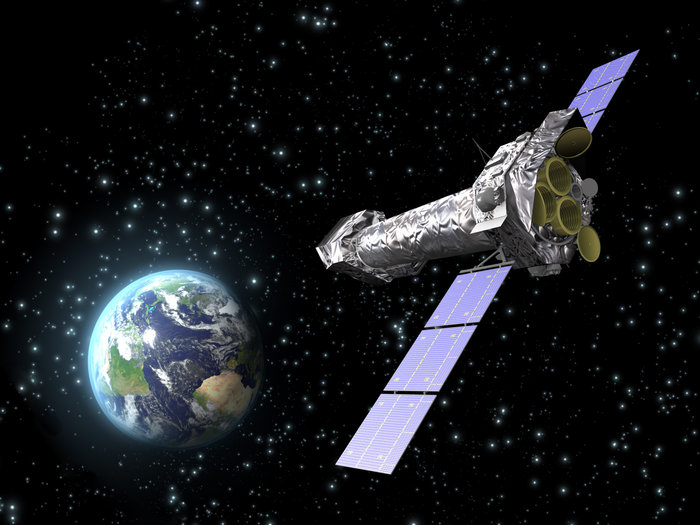
The fourth version of the XMM-Newton Optical Monitor (OM) Serendipitous Ultraviolet Source Survey Catalogue (XMM-SUSS4) has been released.
This version contains sources detected in observations obtained from 2000 to July 2017 in any of the six OM filters which cover wavelengths from 200 nm to 600 nm.
All data have been fully processed using the XMM Science Analysis Software (SAS) system version 17.0.
The most recent Time Dependent Sensitivity Degradation correction, issued in June 2018, has been applied to all data.
The total number of entries is 8.17 million; they correspond to 5.50 million sources, of which 1.03 million have multiple entries in the source table, corresponding to different observations.
The number of observations included in the catalogue is 9749.
The XMM-SUSS4 catalogue can be accessed through the XMM-Newton Science Archive (XSA) search interface.
Besides, both the complete catalogue and a reduced version can be downloaded from the XSA web page.
Image: ESA/ESDC
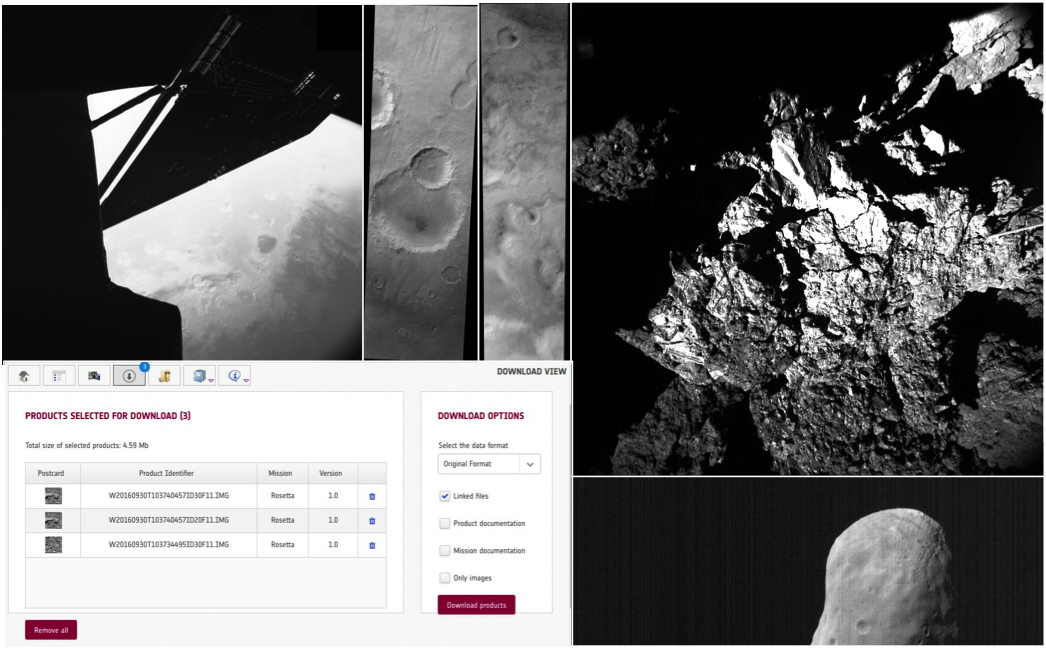
In the last months, new datasets have been delivered to the Planetary Science Archive (PSA), including:
The PSA also got an upgrade on October 16.
Amongst the changes in the new version (5.6) is a new download manager allowing users to save products for later download, as well as to add mission and instrument documentation.
For a limited set of data, there is also the option to download the products in a different format.
Images: ESA/ESDC
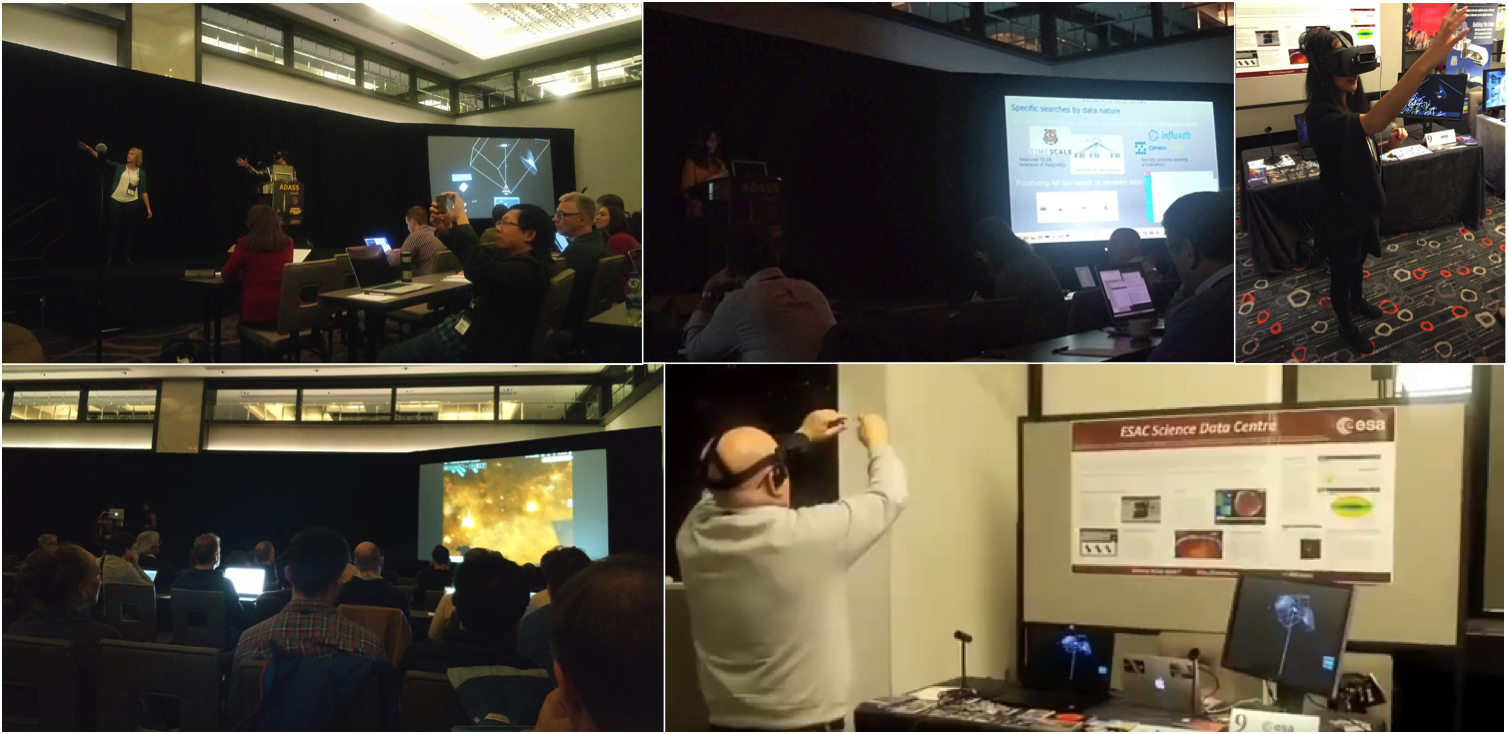
At the moment of publishing this Newsletter, the 28th annual international Astronomical Data Analysis Software and Systems (ADASS) conference is closing its doors in College Park, Maryland, USA.
The conference has taken place between November 11 and 15, 2018, and it was preceded by a meeting of the International Virtual Observatory Alliance (IVOA) at the same location on November 8-10.
Both events counted with strong ESDC representation.
At ADASS, ESDC members presented several contributed talks about 3D visualisation of Gaia data with virtual reality (E. Ramírez and D. Baines), data-driven space science at the ESDC (B. Martínez), science using the Gaia Archive and improvements for Gaia DR3 (J. González) and Solar System data exploration using ESASky (E. Racero).
Furthermore, in an invited talk, Dr. Maggie Lieu (ESA/ESAC) talked about machine learning using the ESA science archives, ESASky and citizen science, featuring a prototype of the soon-to-be-released python ESASky module pyesasky.
In addition, conference participants had the chance to visit the ESA booth and get live demos of the different archives and of ESASky.
They could also try the VR glasses and enjoy the experience of being immersed in the Gaia universe.
Images: ESA, ESA/ESDC
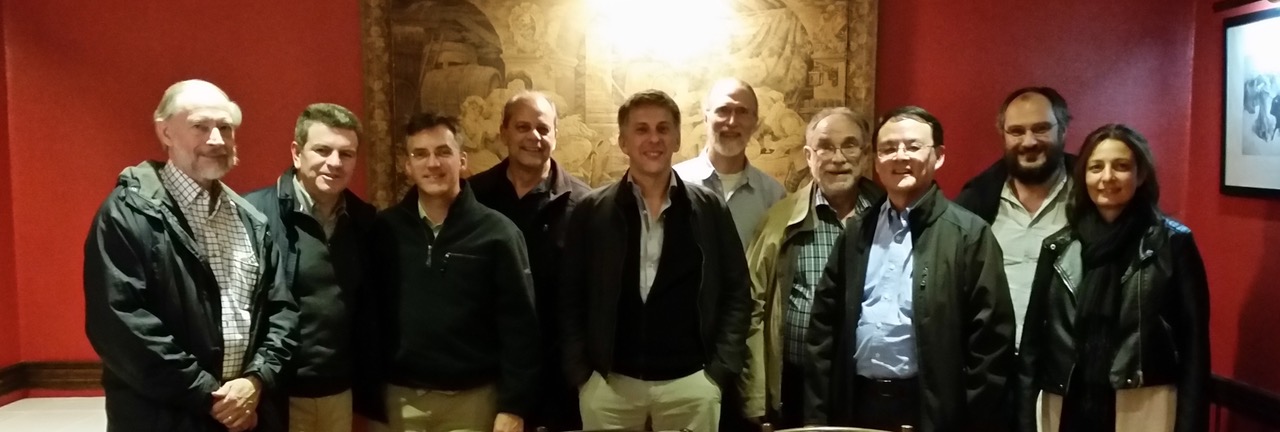
The first International Heliophysics Data Environment Meeting was successfully held at ESAC on October 17-18, 2018.
Gathering experts from various space agencies (e.g. NASA, ESA, JAXA, CNES), this meeting aimed at increasing collaboration and coordination between Heliophysics data providers in order to improve open data sharing.
Plenary sessions were organised on interoperability, formats, community tools (inc. python tools for the Heliophysics community), DOI and SPASE.
One of the outcomes of this first meeting is the creation of the International Heliophysics Data Environment Alliance (IHDEA), with the goal of encouraging the use of common standards and services in order to enable sharing of data and to enhance science.
IHDEA will continue meeting in the future through telecons and yearly face-to-face.
Image: A. Masson